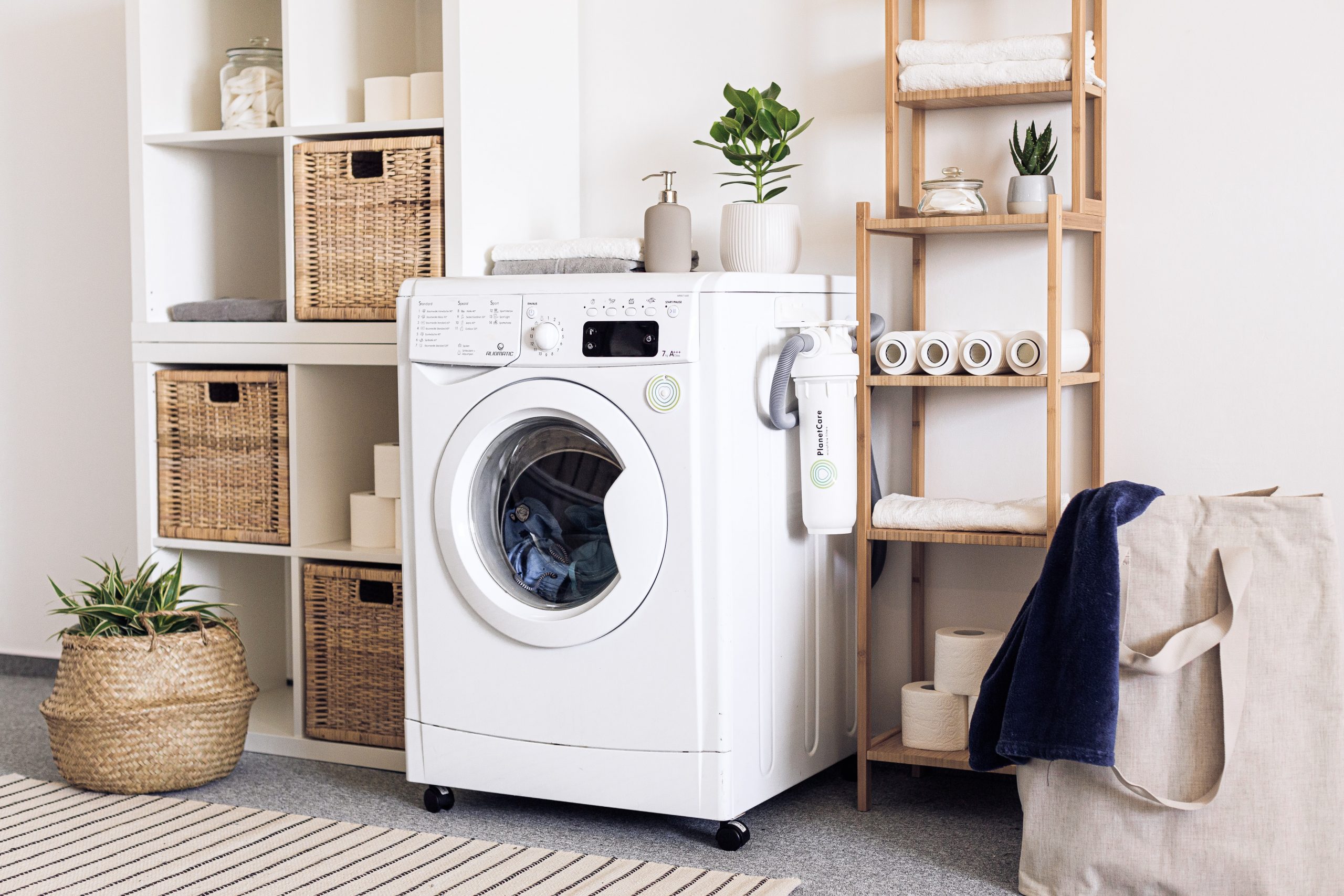How’s the air quality in your laundry room?
To be honest I hadn’t thought about this one before…it usually smells nice inside when I’m doing laundry (because of scented laundry products), and it smells nice outside too, because of the scent coming through the dryer vent! Our brains are trained to equate nice smells with fresh air, but read on to find out exactly how good this air really is.
For some years now, we’ve known about microfibers from clothing that get washed out into waste systems, streams and rivers, eventually ending up in the ocean, marine life and even tap and bottled water. But recent research shows that an even higher quantity of microfibers are being released to the air through dryer vents over those that are washed down the drain. These microfibers are in the fine to ultra-fine particle range, and contribute to overall outdoor air pollution. This, in combination with the VOCs emitted with the laundry products* is not good. Although the researchers found that smaller pore size on the dryer lint filter as well as use of a single to double-dose of laundry softener reduced the outdoor emissions, a lot of microfibers are still being released into the air. All of my training at HypoAir led me to think, if that much is going outside, how many particles are going into the air inside? Fine and ultra-fine particles are a hazard to our respiratory system and whole bodies (see our post “What are ultrafine particles and where do they come from?”).
Since we at HypoAir are not going to advocate for using commercial laundry softeners (one softener used in the study was Bounce, which receives grades of “C” - “F” at EWG.org), here are some of the other ways you can reduce fine particle pollution in your home and outdoors:
- Use non-toxic detergent strips and laundry pods to reduce VOCs.
- Use spot cleaning and other methods to keep your clothes fresh, to reduce washing.
- Dry clothing outside when and where possible to avoid release of microfibers
- For washing: GuppyFriend and Cora Ball catch microfibers before they are washed down the drain (GuppyFriend also prevents fibers from breaking off your clothing). Or, install a microfiber filter from Girlfriend Collective on the drain
Microfibers are just one part of the air quality problem emanating from laundry rooms. Other parts include the carbon monoxide (CO) emitted from gas dryers as a byproduct of combustion, and water vapor from all dryers as the clothes dry out. Dryer vents are meant to exhaust all of these safely outside–if they are sealed tightly. Here is the proper way to seal a dryer vent from the machine to the wall:
- Don’t use duct tape! Despite its name, the adhesive on duct tape is not suited for dryer vent use. It can dry and crack over time, causing leakages. (source: bestairducts.com)
- Do not use screws to connect sections of ductwork together because the sharp end can catch lint inside the duct. (dryerventwizard.com)
- Use foil tape to seal each joint of the ductwork. Here is a video showing how to apply foil tape.
- To install a dryer in a new place, here is a more in-depth instructional on how to run the dryer vent line.
- Make sure the vent is properly sealed to the exterior wall. Here is how to reseal a vent to the wall.
- Do not terminate the duct in an attic or crawlspace! It must go directly outside.
If you run the dryer with a load of laundry and you feel that the humidity is appreciably increasing in the room, it’s best to investigate for leaks in the dryer vent line as soon as possible, because that means that microfibers, water vapor, and possibly VOCs and CO are coming into your living space. The dryer vent is meant to be a low-pressure line for exhausting these products. Another cause of malfunction is letting dryer lint build up in the line, which causes higher pressure (if this happens you may also notice your clothes are not drying as quickly). The dryer line should be cleaned once a year, so that lint does not build up and cause a venting problem or fire hazard.
Finally, here are a few “upgrades” that can make your laundry room an area of good air quality instead of a hazard:
- Since the washing machine, wet laundry and dryer heat all combine to add more humidity and heat in this room, consider installing a separate exhaust fan in your laundry room to run while doing laundry.
- Plug in a Mold Guard/Germ Defender in your laundry room to mitigate mold from increased humidity, PM2.5 from microfibers/lint, and VOCs from laundry products.
With some inspection, planning and improvements, your laundry room can be a more healthy place!
*A 2011 study by Anne Steinemann, University of Washington professor, identified 25 VOCs in household dryer exhaust, including 2 potential carcinogens (acetaldehyde and benzene).Photo by PlanetCare on Unsplash

